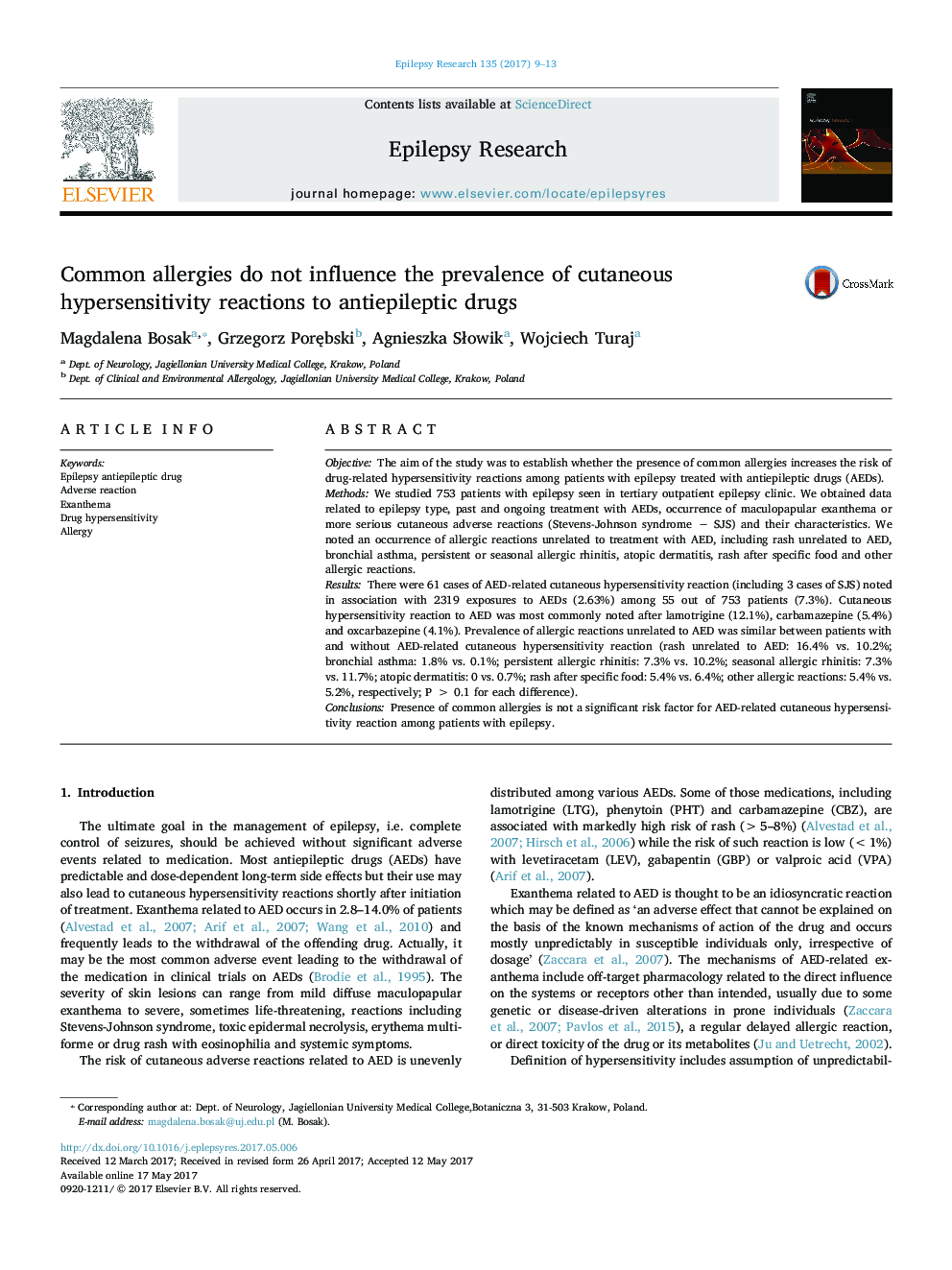| کد مقاله | کد نشریه | سال انتشار | مقاله انگلیسی | نسخه تمام متن |
|---|---|---|---|---|
| 5628721 | 1579888 | 2017 | 5 صفحه PDF | دانلود رایگان |
- AED-related cutaneous hypersensitivity reactions occurred in 7.3% of patients with epilepsy.
- The median interval between institution of treatment and onset of rash was 10Â days.
- Most commonly involved drugs included lamotrigine, carbamazepine and oxcarbazepine.
- Prevalence of common allergies was not associated with AED-related hypersensitivity.
ObjectiveThe aim of the study was to establish whether the presence of common allergies increases the risk of drug-related hypersensitivity reactions among patients with epilepsy treated with antiepileptic drugs (AEDs).MethodsWe studied 753 patients with epilepsy seen in tertiary outpatient epilepsy clinic. We obtained data related to epilepsy type, past and ongoing treatment with AEDs, occurrence of maculopapular exanthema or more serious cutaneous adverse reactions (Stevens-Johnson syndrome â SJS) and their characteristics. We noted an occurrence of allergic reactions unrelated to treatment with AED, including rash unrelated to AED, bronchial asthma, persistent or seasonal allergic rhinitis, atopic dermatitis, rash after specific food and other allergic reactions.ResultsThere were 61 cases of AED-related cutaneous hypersensitivity reaction (including 3 cases of SJS) noted in association with 2319 exposures to AEDs (2.63%) among 55 out of 753 patients (7.3%). Cutaneous hypersensitivity reaction to AED was most commonly noted after lamotrigine (12.1%), carbamazepine (5.4%) and oxcarbazepine (4.1%). Prevalence of allergic reactions unrelated to AED was similar between patients with and without AED-related cutaneous hypersensitivity reaction (rash unrelated to AED: 16.4% vs. 10.2%; bronchial asthma: 1.8% vs. 0.1%; persistent allergic rhinitis: 7.3% vs. 10.2%; seasonal allergic rhinitis: 7.3% vs. 11.7%; atopic dermatitis: 0 vs. 0.7%; rash after specific food: 5.4% vs. 6.4%; other allergic reactions: 5.4% vs. 5.2%, respectively; PÂ >Â 0.1 for each difference).ConclusionsPresence of common allergies is not a significant risk factor for AED-related cutaneous hypersensitivity reaction among patients with epilepsy.
Journal: Epilepsy Research - Volume 135, September 2017, Pages 9-13
